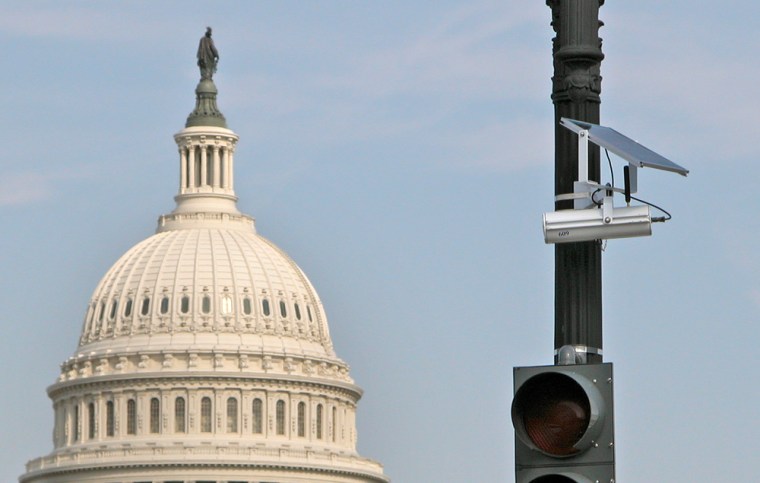Ever driven into a traffic jam just after the guy on the radio said the road was all clear?
Or braced yourself for the congestion he warned about only to zip right through?
A host of private companies say they have the one thing that can ease such frustrations: better information.
Now one of those companies, SpeedInfo Inc., has installed 50 solar-powered, wireless radar sensors along major arteries in the District of Columbia that take readings of average traffic speeds twice a minute in both directions.
The company says the sensors provide a far more accurate picture of road conditions than can be gleaned from hovering helicopters or highway patrol alerts.
In a business model that SpeedInfo hopes will flourish around the country, the San Jose, Calif.-based company is letting the city use the data for traffic planning free of charge, in exchange for access to the side of the road. SpeedInfo plans to sell the information to paying customers, including broadcasters and companies that provide information for in-car navigation devices.
The problem with traditional traffic reports is that in most of the country, they rely on highway patrol accident reports that come 30 to 40 minutes late and a few helicopters that get into the sky during rush hour, SpeedInfo Chief Executive Doug Finlay said.
“Chopper Bill gets in the sky and says, ‘Oh, I’m looking at the road and the cars are going slow,’” Finlay said. “Chopper Bill is the best data you got.”
Better choices
Tim Lomax, a researcher at the Texas Transportation Institute, said a recent proliferation of high-tech traffic data systems is good for drivers.
“Even if it doesn’t eliminate traffic congestion, they at least give people an idea of what sort of choices they’re facing and more control over their destiny, which is part of the frustrating element of traffic congestion,” Lomax said.
Finlay said he hoped success in the capital would help bring transportation officials around the country on board.
“We view Washington, D.C., as very strategic,” he said. “The biggest issue for us is getting access to the side of the road to put up our equipment.”
The company has also approached Maryland and Virginia with the hope of establishing a network throughout the Washington metropolitan area, one of the most congested regions in the nation.
Each of SpeedInfo’s sensors weighs about 16 pounds and sits under a 1-square-foot solar panel. The sensors are mounted on light or sign poles and transmit data wirelessly to a server in San Jose. The last of the D.C. sensors were installed about three weeks ago, Finlay said.
The four-year-old privately held company so far has installed about 450 sensors nationwide, mostly in the San Francisco Bay area, where they are used for the 511 system, a free service that provides information on traffic conditions by phone and on the Web.
Other plans
SpeedInfo’s main competitor is Traffic.com, which has been in business since 1998 and has a much larger network of 1,500 radar sensors. The company was recently acquired by Navteq Corp., which provides digital maps for vehicle navigation systems, many of which include features that route drivers around traffic.
Traffic.com, which also partners with local transportation officials, has 20 sensors in D.C. and 40 in northern Virginia. Another 40 are on the way in Maryland, said John Collins, vice president for intelligent transportation systems.
Another approach — tracking the signals of the cell phones that happen to be inside vehicles — is being used by two companies, IntelliOne and AirSage. In some areas, officials use automatic toll readers to measure how long it takes vehicles to get from one point to another, even when they aren’t collecting tolls, Lomax said.
There also is older equipment for measuring real-time traffic speed — sensors embedded in pavement — but they can be complicated to maintain.
Erik Linden, a spokesman for the District Department of Transportation, said D.C.’s arrangement with SpeedInfo is “a healthy public-private relationship to benefit motorists.” He said the department will first work with the company to ensure the data’s accuracy before using them to quantify congestion. Ultimately, the department may use the information to better manage the flow, he said. In addition, the sensors are located on some of the city’s main evacuation routes, meaning the information could have emergency-planning uses.
Lest the words “radar” and “speed” alarm high-intensity motorists, Finlay emphasized that the sensors are not equipped with cameras.
“We don’t have any way of determining who is going 100 miles per hour,” he said. “We just know someone is.”
